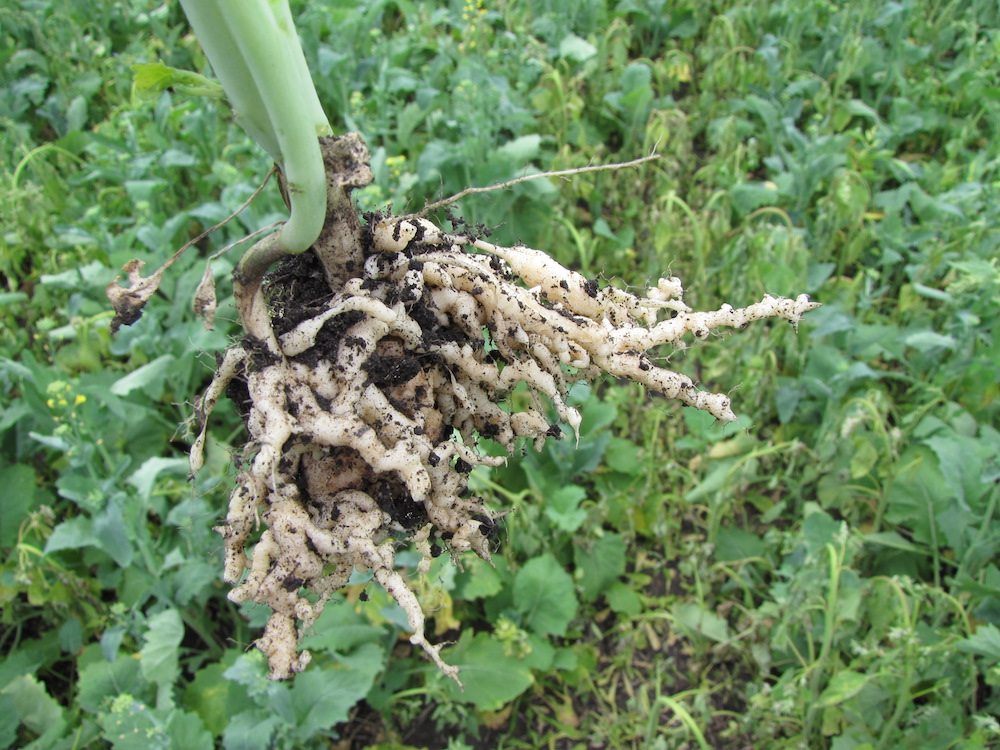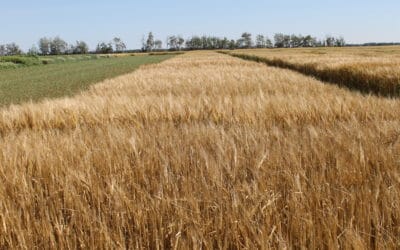It was a sight this past September in canola fields near Brooks in Newell County and again in Leduc County, 2 sniffer dogs on the hunt for clubroot galls. They and their trainers were in the province for the final phase, the field trial, of the canine detection of clubroot project.
The project came about when Michael Harding, research scientist of plant pathology with Alberta Agriculture and Forestry (AF), was contacted by dog trainer Mario Bourque in New Brunswick about training sniffer dogs to detect plant disease. Harding suggested clubroot.
“I knew that the concept had been done before (with avocados) and we needed to find the situation that needed the solution,” explained Harding. “Clubroot was the one because all the symptoms are underground. We have to destructively sample to see them. We needed something that could see the roots without pulling them out of the ground. That is where the dogs’ olfactory senses came into play.”
Harding contacted Farming Smarter’s general manager Ken Coles to support the project.
“In the research world, it is always a struggle to figure out how to get the projects that are interesting to farmers and practical in your area,” said Coles. “We felt that it was a relevant and kind of an out there idea and that’s kind of the premise of Farming Smarter.”
Before the two dogs – Josie, a 2 year old German Shepherd, and Adi, a 13 month old Golden Doodle – flew to Alberta, trainer Bill Grimmer used clinical scent training for 3 months in New Brunswick. Once they had proven the dogs could detect clubroot in the clinical trials, they were ready for field testing.
During those two days in the field, those participating in the trial saw evidence that the dogs would alert their handlers to areas where clubroot was present without digging up the roots.
“We set out to answer the question can dogs be trained to sniff out clubroot. We have shown that is truly the case both in the clinical setting and in the field setting,” Harding added.
“We learned a lot in those field trials,” said Harding. “The dogs had never been in a canola field before. They had never been on an airplane. It did not go seamlessly because this was a really new environment and a new experience for the dogs. They are used to detecting gall material that is not underground on a canola stubble, so it was the first time for that.”
Harding added that these dogs would need some additional training to be working dogs with a high rate of success at detecting clubroot. “But, we have seen lots of evidence that they can do it.”
“Clubroot costs the industry a lot of money,” said Coles. “For us down south, where we are in that sort of clubroot-free zone, to be able to detect it earlier, we can employ the strategies that have already been successful and maybe keep it out a bit longer.”
“If you have a scent dog that can help scout for clubroot, you eliminate the need to pull out 500 roots to find one with a gall,” said Harding. “There is an upfront cost for a sniffer dog, but you do not have to pay them a salary. They are really happy to go. Dogs could be trained to detect resting spores in the soil, so they could detect clubroot infestations in soil on equipment. The dog could verify there is no presence of clubroot spores on equipment up for sale. You could combine with GPS, on the dog’s collar to see where the dog has scouted, what it missed, where it has alerted and where it has not.”
Harding also added the possibility of training the dogs to detect more than clubroot. “You could train a single animal to alert you to fusarium, aphanomyces, blackleg, verticililium wilt, late blight – these dogs have the capability of learning that skill.”
“Now the work starts,” said Cole. “There are just so many approaches and opportunities, and we need to sort them out.”
Source: Alberta Ag





